
Custom Batons Information
Hand-crafted from beautiful and exotic woods, our music director batons are the epitome of quality. We use exacting standards to produce the most lightweight and perfectly balanced
director batons on the market today. Until you actually hold one of the premium crafted instruments you will not have realized what you were missing. They are perfectly balanced at the point where the handle meets the shaft so they feel extremely light. Most of our batons use a highly polished brass insert in the handle to account for the differing weights of the exotic woods; some are much more dense and
heavier than others. These batons are highly polished and balanced to fit even the most discerning directors needs.
There are so many varieties of woods to choose from you will find exactly the color you prefer. Rest assured, all batons are
precisely balanced and extremely comfortable. You may wish to purchase more than one to fit a number of needs you might have.
It is possible to have more than one wood per baton. We are able to combine types of wood to produce endless varieties and appearances. Although this may cost more, it makes the instrument completely customized and one of a kind.
We are also able to inlay a number of pearl designs and brass trims and weights.
Click on an option to go to that section.
Baton Type Information
Handle Finishes
Shaft Finishes
Handle Styles
Handle Wood Choices
Exotic Woods Description
Optional Inlays
Baton Type Information
Handle Finishes
All batons are available with a high gloss finish or a satin finish. See below for the choice of exotic woods for the handle composition.
Shaft finishes and materials
Shafts may be made of wood and be finished with the natural look and with a glossy white finish. Shafts may also be made of fiberglass if you wish.
Handle Styles

Optional Inlay Information
These are a few designs for optional pearl inlays. They may be placed on the rounded end of the handle for dressiness. Inlays are all pearl in color. Abalone dots are also available. We may also inlay a rosewood or pearl cross on the side of the handle.
Dot  |
Diamond  |
Squared  |
Fleur De Lis  |
Flower  |
Snowflake  |
Exotic Wooden Handle Choices
Some woods are naturally much more dense and heavier than others.
Amboyna* 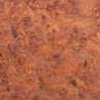 |
Bloodwood 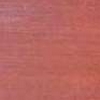 |
Bocote * 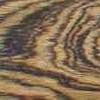 |
Bubinga * 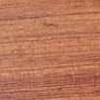 |
Cocobolo * 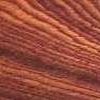 |
Ebony *  |
Kingwood * 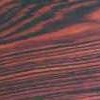 |
Koa 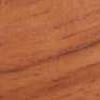 |
Olive  |
Padauk 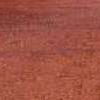 |
Purpleheart *  |
Redheart 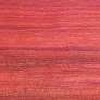 |
Snakewood* 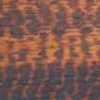 |
Tulipwood 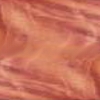 |
Zebrawood * 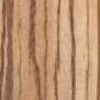
|
Exotic Wood Descriptions
 |
Amboyna A rare, exotic hardwood that grows in Southeast Asia and has a fragrant aroma. It can vary in color from yellow to golden brown to red, and is generally considered excellent for both turning and finishing. Back to top |
 |
Bloodwood grows in regions within Venezuela, Peru, Panama, and Brazil. It is a very hard wood and has a tight grain. It is a beautiful red color with occasional yellow grain running through it. Back to top |
 |
Bocote is a tree in Mexico and South America which can grow up to one hundred feet tall. It is a highly figured wood with light brown grain. The natural eyes in the wood make it very unique. Back to top |
 |
Bubinga grows in Cameroon and Gabon, West Africa. Its trunk is usually clear of branches up to sixty feet and the tree grows in Excess of one hundred feet. It is a very hard wood. Back to top |
 |
Cocobolo grows in Mexico, Panama, Costa Rica, Nicaragua. This tree grows up to forty to sixty feet in height. Its grain is yellow to dark red with black streaks. Back to top |
 |
Ebony grows in Africa - Gold Coast, Nigeria, Cameroon, Zaire. It will grow up to fifty to sixty feet in height. It is a very dark heavy wood with an occasional brown streak through it. Back to top |
 |
Kingwood is a short slender tree which grows in Brazil. It is a relatively rare wood and is very hard. It is medium brown wood with a light purple tint and an occasional purple streak runs through it. Back to top |
 |
Koa grows on the Hawaiian Islands. This tree can grow up to one hundred feet in height. The wood is a beautiful light brown with laces of darker brown running through an almost 3D like grain. Back to top |
 |
Olive comes from Middle Eastern regions. It is a light brown wood with an olive tint to it. There are ususally well defined light streaks of brown. Back to top |
 |
Padauk grows in Central and West Africa. It has a rich red to purple red heartwood and well defined grain. Back to top |
 |
Purpleheart grows in areas from Mexico to Tropical South America. The tree can reach heights up to 120 to 130 feet. It is purple in color once it has been touched by oxygen. It usually has purple grain with occasional dark purple streaks. Back to top |
 |
Redheart is dull pink to moderately bright red and has a very well defined grain. |
 |
Snakewood grows in Suriname which is a small, South American country located North of Brazil. It is a light to dark brown color with highly figured designs running through it. Back to top |
 |
Tulipwood is the yellowish greenish wood yielded from the tuliptree, found on the Eastern side of North America and also in some parts of China. In the United States, it is commonly known as tulip poplar or yellow poplar, even though the tree is not related to the poplars. In fact, the reference to poplar is a result of the tree's height, which can exceed 100 feet. The wood is very light, but very strong. Back to top |
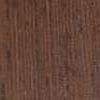 |
Wenge grows in Tropical West Africa, Zaire, Cameroon, Gabon, Tanzania. The tree can reach a height of sixty to ninety feet. It is a very dark brown wood with extremely defined black streaks. Back to top |
 |
Zebrawood grows in West Africa, especially Cameroon and Gabon. The bark can be up to twelve inches thick and the tree grows to massive heights of 150 feet. It is light gold. Back to top |

